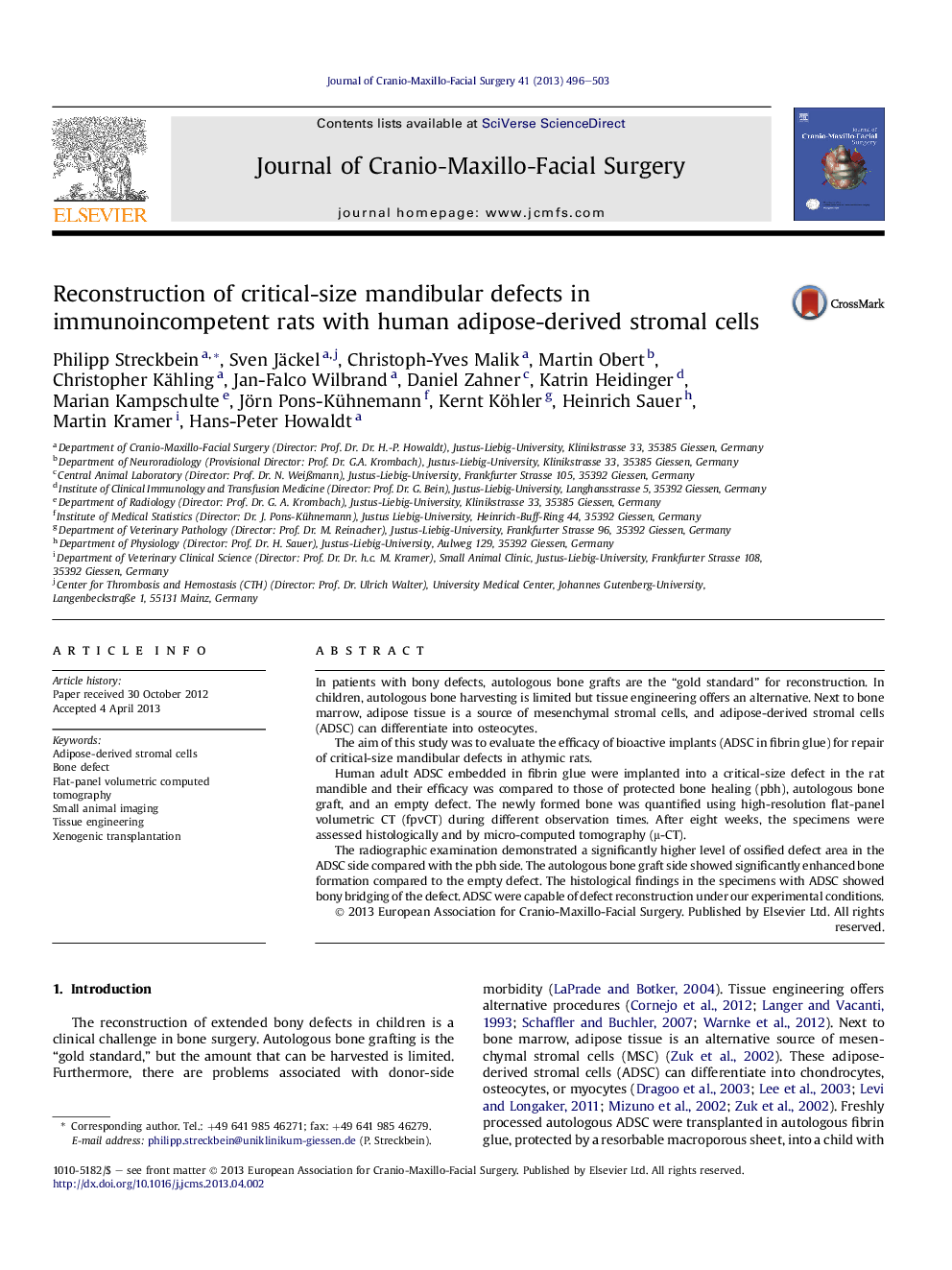| Article ID | Journal | Published Year | Pages | File Type |
|---|---|---|---|---|
| 3143160 | Journal of Cranio-Maxillofacial Surgery | 2013 | 8 Pages |
In patients with bony defects, autologous bone grafts are the “gold standard” for reconstruction. In children, autologous bone harvesting is limited but tissue engineering offers an alternative. Next to bone marrow, adipose tissue is a source of mesenchymal stromal cells, and adipose-derived stromal cells (ADSC) can differentiate into osteocytes.The aim of this study was to evaluate the efficacy of bioactive implants (ADSC in fibrin glue) for repair of critical-size mandibular defects in athymic rats.Human adult ADSC embedded in fibrin glue were implanted into a critical-size defect in the rat mandible and their efficacy was compared to those of protected bone healing (pbh), autologous bone graft, and an empty defect. The newly formed bone was quantified using high-resolution flat-panel volumetric CT (fpvCT) during different observation times. After eight weeks, the specimens were assessed histologically and by micro-computed tomography (μ-CT).The radiographic examination demonstrated a significantly higher level of ossified defect area in the ADSC side compared with the pbh side. The autologous bone graft side showed significantly enhanced bone formation compared to the empty defect. The histological findings in the specimens with ADSC showed bony bridging of the defect. ADSC were capable of defect reconstruction under our experimental conditions.
